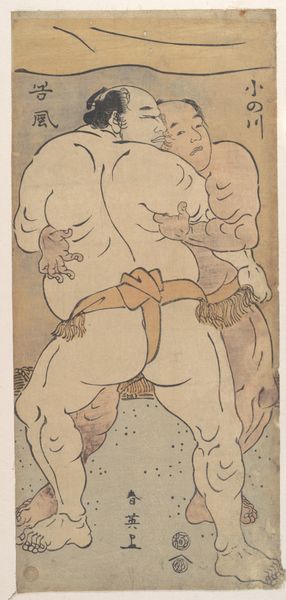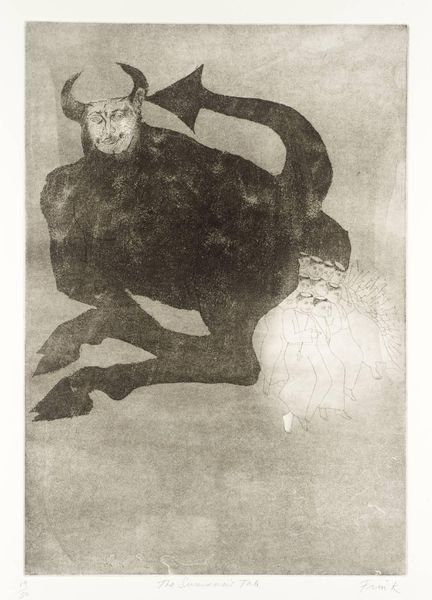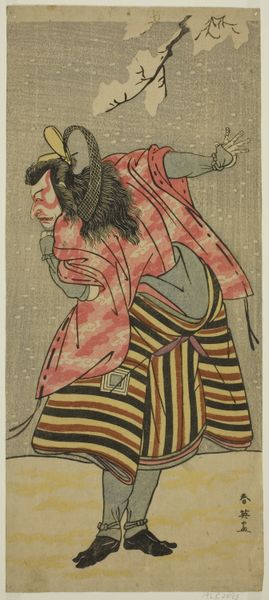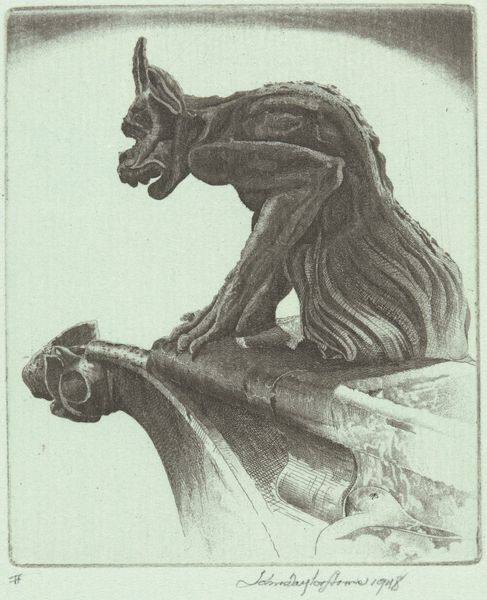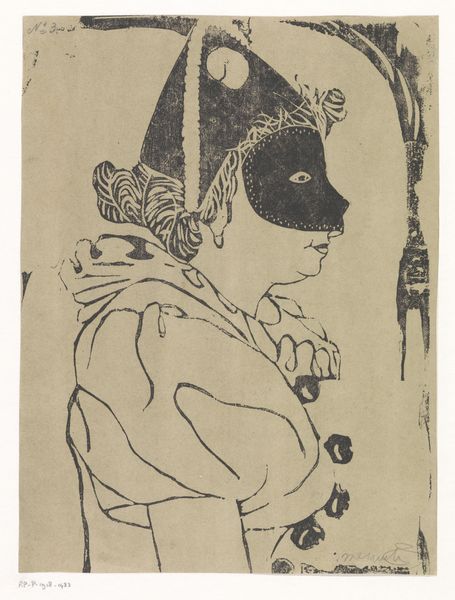
print, paper, ink, woodblock-print
#
narrative-art
#
ink painting
# print
#
asian-art
#
ukiyo-e
#
figuration
#
paper
#
ink
#
woodblock-print
Dimensions: 69.5 × 12.2 cm (27 3/8 × 4 3/4 in.)
Copyright: Public Domain
Curator: My first thought is… stern. An intimidating presence rendered so simply, with such directness. Editor: I see exactly what you mean. We’re looking at "Shoki the Demon Queller Marching to the Left," a woodblock print created around 1745 by Okumura Masanobu. This piece, currently residing at The Art Institute of Chicago, depicts the legendary figure Shoki. He's traditionally seen as a protector, specifically against evil spirits. Curator: The single-minded march captured here is captivating. You can feel the weight of responsibility, the solemn vow to safeguard others. And just look at that headgear, those flowing robes--visual cues that denote rank and a deep cultural lineage. Editor: Absolutely. Shoki as a figure in Japanese art reflects the political stability sought by the Shogunate during the Edo period. A cultural desire for order expressed in popular art, wouldn't you agree? His imposing figure was a visual symbol of a regime’s might. Curator: I'd say more broadly it reveals our intrinsic human yearning for protectors, beings larger than life that will battle our demons – internal and external. Consider how often that narrative recurs across centuries. That scowl could ward off not only disease but also chaos, the unknown. It's amazing that such strong symbolism is represented in a medium like the ukiyo-e. Editor: Ukiyo-e as a form was tied to broader urban expansion. Art became less an aristocratic concern and more available to merchants and even commoners. Disseminating ideas about cultural and political power more freely and with greater impact. It served as a critical vector in culture at the time. Curator: Indeed, its power came from this democratized appeal; and because these symbols resonated across society. Each line seems strategically placed to emphasize that unyielding march. We are all comforted knowing he marches ever forward, no? Editor: A fascinating confluence of folk belief, political need, and artistic expression, then! Seeing how these prints gained in popularity surely tells us much about the society which eagerly consumed them. Curator: I see that, tracing the line between popular art and cultural memory through such charged imagery, always revealing our deepest psychological needs through this simple yet effective method.
Comments
No comments
Be the first to comment and join the conversation on the ultimate creative platform.




